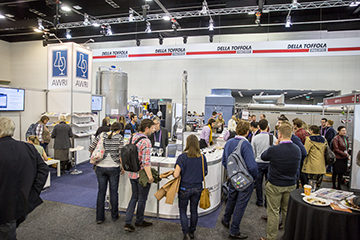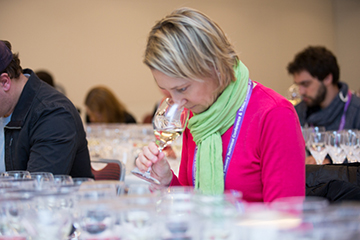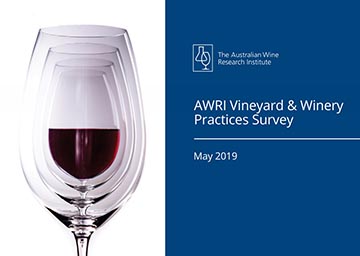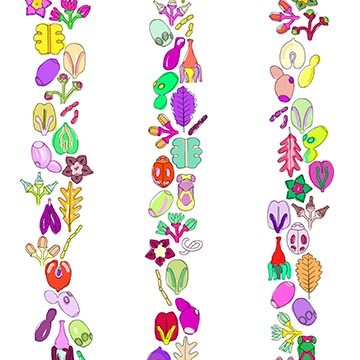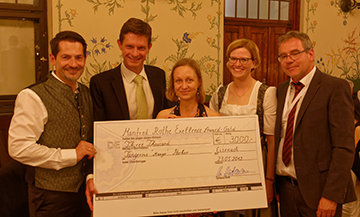Order the latest AWRI staff publications online
Accessing the latest AWRI publications is easy. Visit the AWRI Publications web page to:
- View the 10 most recent AWRI staff publications and order the articles online from the AWRI Library
- Search the staff publications database
- Read the full-text of ‘Technical Notes’ from Technical Review (PDF format)
- Read the full-text of ‘AWRI reports’ and ‘Vineyards of the world columns’ published in Wine & Viticulture Journal (PDF format)
- Read the full text of ‘Ask the AWRI columns’ published in Australian & New Zealand Grapegrower & Winemaker
A list of AWRI publications published since the last eNews is included below:
2079 Visalakshan, R.M., MacGregor, M.N., Cavallaro, A.A., Sasidharan, S., Bachhuka, A., Mierczynska-Vasilev, A.M., Hayball, J.D., Vasilev, K. Creating nano-engineered biomaterials with well-defined surface descriptors. ACS Appl. Nano Mater. 1(6): 2796-2807; 2018.
2080 McRae, J., Mierczynska-Vasilev, A., Herderich, M., Johnson, D. Getting proactive about protein. Wine Vitic. J. 34(2): 33-34; 2019.
2081 Hoare, T. A letter from your vineyard soil. Wine Vitic. J. 34(2): 40-41; 2019.
2082 Dry, P. Cinsault. Wine Vitic. J. 34(2): p.58; 2019.
2083 Abbott, T., Wilkes, E. Understanding carbon emissions in the wine industry. Aust. N.Z. Grapegrower Winemaker (663): 71-72; 2019.
2084 Cowey, G. Ask the AWRI: Cleaning winery floors, tanks and hoses. Aust. N.Z. Grapegrower Winemaker (663): 75-76; 2019.
2085 Bekker, M.Z., Day, M.P., Smith, P.A. Changes in metal ion concentrations in a Chardonnay wine related to oxygen exposure during vinification. Molecules 24(8): 1-20; 2019.
2086 Longbottom, M. Ask the AWRI: Post-harvest care of tired vines. Aust. N.Z. Grapegrower Winemaker (664): 37-38; 2019.
2087 Nordestgaard, S. Advances in dissolved gas adjustment. Aust. N.Z. Grapegrower Winemaker (664): 41-42; 2019.
2088 Cordente, A.G., Schmidt, S., Beltran, G., Torija, M.J., Curtin, C.D. Harnessing yeast metabolism of aromatic amino acids for fermented beverage bioflavouring and bioproduction. Appl. Microbiol. Biotechnol. 103(11): 4325-4336; 2019.
2089 Wilkes, E., Huckaba, P., Hodson, G. Harmonizing expression of measurement results in wine analysis: Best practices when testing and reporting sugar in wine. BIO Web of Conferences 12 (03021): 1-3; 2019.
2090 Li, S., Wilkinson, K.L., Mierczynska-Vasilev, A., Bindon, K.A. Applying nanoparticle tracking analysis to characterize the polydispersity of aggregates resulting from tannin-polysaccharide interactions in wine-like media. Molecules 24(11): E2100; 2019.
2091 Godden, P. Ask the AWRI: Saignée. Aust. N.Z. Grapegrower Winemaker (665): 91-92; 2019.
2092 Johnson, D. Industry heads to Adelaide. Aust. N.Z. Grapegrower Winemaker (665): p. 22; 2019.
2093 Teng, B., Hayasaka, Y., Smith, P.A., Bindon, K.A. Grape seed and skin tannin molecular mass and composition affects the rate of reaction with anthocyanin and subsequent formation of polymeric pigments in the presence of acetaldehyde. J. Agric. Food Chem. DOI: 10.1021/acs.jafc.9b01498: 1-37.; 2019.
2094 Korosi, G.A., Wilson, B.A.L., Powell, K.S., Ash, G.J., Reineke, A., Savocchia, S. Occurrence and diversity of entomopathogenic fungi (Beauveria spp. and Metarhizium spp.) in Australian vineyard soils. J. Invertebr. Pathol. 164: 69-77; 2019. |


